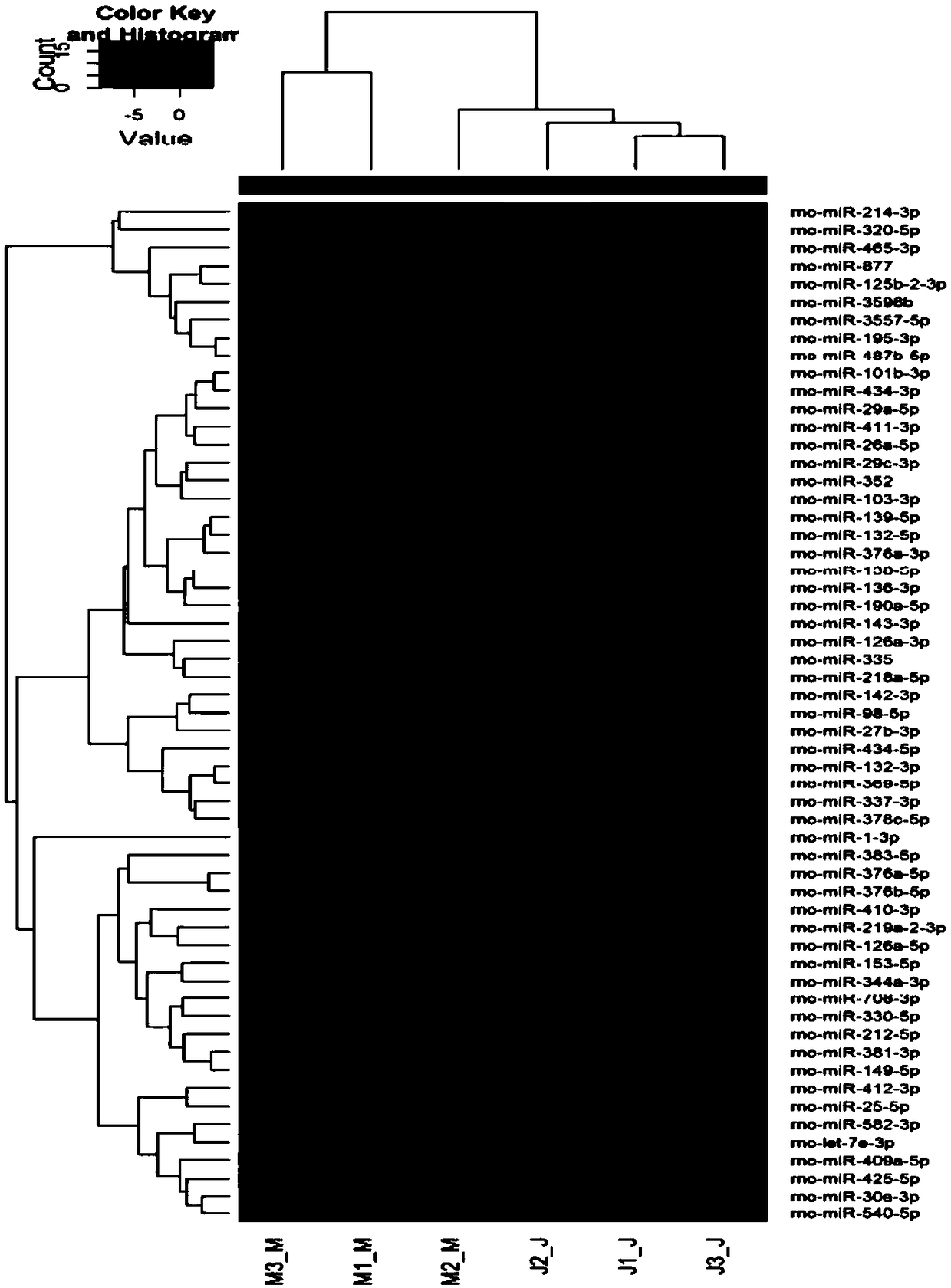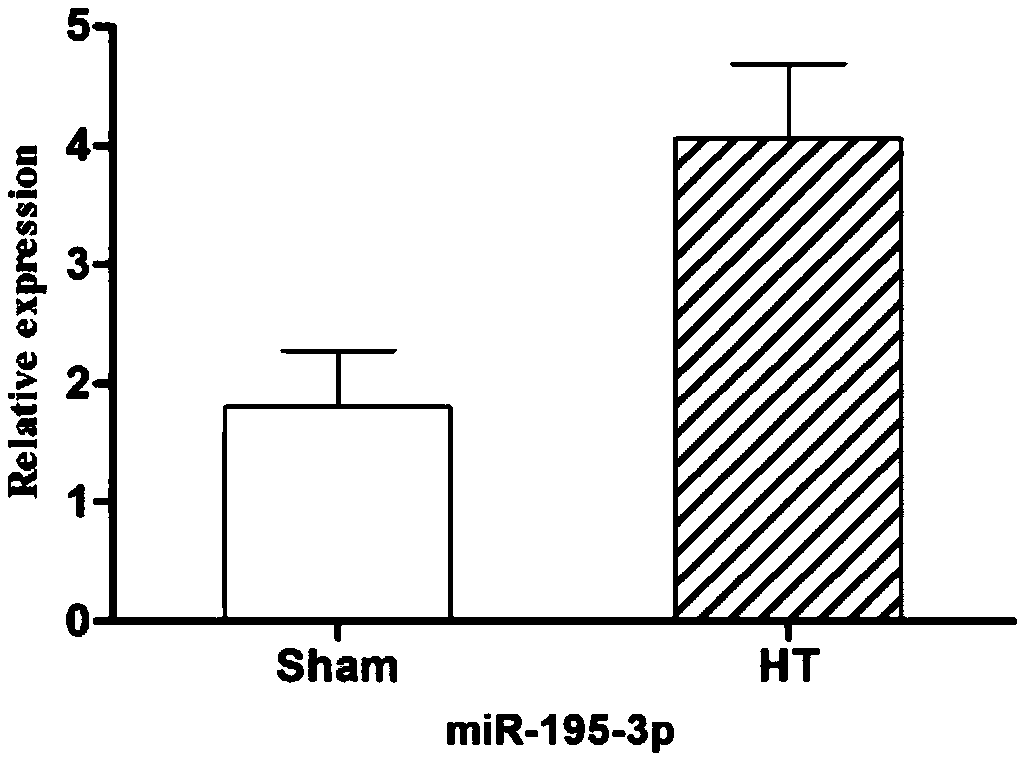Intracranial hemorrhage transformation model after acute cerebral ischemia mechanical recanalization and microRNA screening method and application thereof
A technology for acute cerebral ischemia and intracranial hemorrhage, applied in animal husbandry and other fields, can solve the problems of aggravated brain injury, poor clinical prognosis, unclear mechanism of intracranial hemorrhage, etc., achieve small surgical incision, high success rate, and smooth modeling process simple and efficient effect
- Summary
- Abstract
- Description
- Claims
- Application Information
AI Technical Summary
Problems solved by technology
Method used
Image
Examples
Embodiment 1
[0086] Example 1 Establishment of Transformation Model of Intracranial Hemorrhage after Mechanical Recanalization of Acute Cerebral Ischemia
[0087] Multiple high glucose injections were used to induce acute hyperglycemia in rats, combined with suture embolization to occlude the middle cerebral artery (MCA) for 5 hours and then canalize it for 19 hours to establish a model of intracranial hemorrhage transformation after mechanical recanalization of acute cerebral ischemia. That is, the transformation model of intracranial hemorrhage after endovascular mechanical recanalization.
[0088] 1.1 MCA ischemia-reperfusion model
[0089] Healthy rats were selected and fasted for 12 hours before operation without water. 10% chloral hydrate (3.5ml / kg) was injected intraperitoneally for anesthesia, and the anal temperature of rats was maintained at 37±0.5°C. Under sterile conditions, a paramedian incision was made 0.5 cm to the left side of the midline of the neck, and the anterior su...
Embodiment 2
[0099] Example 2 Detection of microRNAs chip in brain tissue of rats with intracranial hemorrhage transformation
[0100] Rats were MCA occluded and ischemic for 24 hours, and were deeply anesthetized by excessive injection of 10% chloral hydrate. With the xiphoid process as the mark, cut the chest wall in a "V" shape to expose the heart, insert the indwelling needle at the strongest point of the apical pulse, and send the flexible tube into the thoracic aorta. Perfuse about 200ml of pre-cooled normal saline through the right atrium until the perfusate is clear. After the rats were killed by decapitation, the whole brain was quickly removed, the olfactory bulb, cerebellum and brainstem were removed, and the entire cerebral hemisphere was retained. The ischemic side brain and the non-ischemic side cerebral hemisphere were collected separately, and the RNA preservation solution was stored in a -80 degree refrigerator.
[0101] The microRNA chip (miRCURYLNAV.18.0; containing 3100...
Embodiment 3
[0104] Example 3 Fluorescent quantitative RT-PCR verification of differential expression of microRNAs
[0105] Fluorescent quantitative qRT-PCR technology was used to further verify the differentially expressed microRNAs of the above chip, and divided into two groups (n = 5 rats in each group) of intracranial hemorrhage transformation model group and sham operation group, and the cerebral hemisphere tissue of the ischemic side was obtained. The designed and synthesized qRT-PCR primer sequences are listed in Table 1.
[0106] 3.1 Extraction of brain tissue RNA
[0107] Mix 100g of brain tissue sample with 1ml of Trizol reagent and shake well. After homogenization, the sample was left at room temperature for about 10 minutes to completely dissociate the nucleic acid-protein complex. Add 0.2ml chloroform to every 1ml Trizol homogenate sample, shake vigorously for 15 seconds, and incubate at 30°C for 5 minutes. Centrifuge at 12000g for 15 minutes at 4°C. Pipette the aqueous ph...
PUM
 Login to View More
Login to View More Abstract
Description
Claims
Application Information
 Login to View More
Login to View More - R&D
- Intellectual Property
- Life Sciences
- Materials
- Tech Scout
- Unparalleled Data Quality
- Higher Quality Content
- 60% Fewer Hallucinations
Browse by: Latest US Patents, China's latest patents, Technical Efficacy Thesaurus, Application Domain, Technology Topic, Popular Technical Reports.
© 2025 PatSnap. All rights reserved.Legal|Privacy policy|Modern Slavery Act Transparency Statement|Sitemap|About US| Contact US: help@patsnap.com



